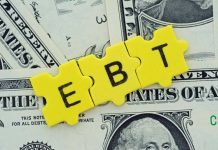
Not everyone has the money on hand to buy things they want and need. That is why loans exist. Loans give people the opportunity to get the money they need from a lender. They will then need to repay the lender back over a set period of time. There are a variety of different loans available. One specific opportunity available is a federal loan. This is a type of loan that either the federal government backs or provides directly. There are a variety of different federal loan options available. The upside to these loans is that they usually come with benefits like easier qualifications, lower interest rates, forgiveness opportunities, and more.
What are Different Types of Federal Loans?
The reason that people need a loan will be different depending on their current situation. For example, some people may want a home loan while other people may want an education loan. Not every loan opportunity will be the right fit for every person. That is why it is important to review the different loan options that are available to see if anything would be worth checking out more in-depth for what you are looking to finance! Some popular types of federal loans includes:
- FHA Home Loans
- Single Family Housing Repair Loans and Grants
- VA Home Loans
- Single Family Guaranteed Loan Program
- Single Family Housing Direct Loans
- Direct Unsubsidized Loans
- Direct Subsidized Loans
- Native American Direct Loans
- Direct PLUS Loans
- Interest Rate Reduction Refinance Loans
- 7(a) Loans
FHA Home Loans
The Federal Housing Administration (FHA) insures mortgages that are issued by banks (or other approved lenders). The benefit to these types of mortgages is the fact that they have lower down payment requirements than a lot of conventional home loans. They are also easier to qualify for since they have lower credit score requirements. They are popular among individuals that are low income that dream of owning a home. It’s also a popular option for first time homebuyers!
If an individual has a credit score of at least 580 then they qualify for a 3.5% down payment. However, those that have even worse off credit scores of 500 to 579 can still qualify but their minimum down payment requirement would be 10%.
Besides traditional mortgages, the FHA also offers other types of mortgages like:
- 203(k) Home Improvement Loans: This is a mortgage that comes along with additional money to handle expenses like home improvements, renovations, and repairs
- Energy Efficient Mortgages: This is a mortgage that comes along with extra money to handle home improvements that are energy efficient
- Section 245(a) Loans: These mortgages have a low monthly payment to start off. However, the monthly payment will increase over time which in turn shortens the overall loan term
- Home Equity Conversion Mortgages: This is a reverse mortgage designed for elderly homeowners that are at least 62 years old and want to get money from their home equity
Single Family Housing Repair Loans and Grants
This is a loan opportunity offered by the United States Department of Agriculture (USDA). It also goes by the name of the Section 504 Home Repair Program. The goal of this financing support is to give very low income people the funds they need to improve, repair, or even modernize their home. One of the benefits that comes along with this loan is the fact they have a fixed interest rate of 1%! The maximum loan amount available is $40,000. However, eligible elderly homeowners also have the opportunity to get a maximum grant amount of $10,000. This can be combined to total $50,000 when paired with a loan.
VA Home Loans
The United States Department of Veterans Affairs (VA) home loans are a type of mortgage opportunity that aims to help veterans, active service members, and qualifying military spouses. Even though these are federal loans they are issued by private lenders. However, the VA is the entity that guarantees these loans. These loans come with no down payment requirements, don’t require private mortgage insurance (PMI), offer competitive interest rates, and can be easier to qualify for!
Single Family Guaranteed Loan Program
The United States Department of Agriculture (USDA) offers these loans. Also known as the Section 502 Guaranteed Loan Program, this opportunity gives eligible lenders support in giving low income (or moderate income) households lending options. It is able to reduce the risk that lenders would traditionally face by guaranteeing the loan. For individuals to be eligible for this loan opportunity they would need to:
- Meet income requirements
- Have the property be their primary residence
- Have a qualifying citizenship status
This is a benefit to individuals that are low income because there are no credit requirements, no down payment requirements, and it can provide a more affordable way to handle the rural home buying process. However, the loans can also be used towards building, rehabilitating, improving or relocating a property to an eligible rural area.
Single Family Housing Direct Home Loans
This is another home loan opportunity provided by the United States Department of Agriculture (USDA). It also goes by the name of the Section 502 Direct Loan Program. The goal of this loan opportunity is to help low income and very low income individuals get a house in qualifying rural areas. It is able to do this by improving the person’s ability to repay the loan through payment assistance. The payment assistance that this loan provides is in the form of a subsidy that will temporarily reduce the mortgage payment. How much a homebuyer can get will depend on their adjusted family income. In order to apply for this assistance some eligibility criteria includes:
- Not have sanitary, safe, decent housing
- Not be able to get a loan that works for their situation
- Live in the property as their primary residence
- Have a qualifying citizenship status
Not every property is available for this loan either. Instead, properties must:
- Typically be less than 2,000 square feet
- Have a market value that is within the eligible area’s loan limit
- Not be designed to produce income
Direct Unsubsidized Loans
If you want to finance your education you can consider a Direct Unsubsidized loan. This loan opportunity is available through the United States Department of Education (ED). It is only available to undergraduate, graduate, and professional students. The specific amount that you are able to borrow is determined by your school which takes a variety of factors into consideration. However, the maximum loan amount is $20,500 for a year. If you want to apply for this loan you will need to fill out a Free Application for Federal Student Aid (FAFSA). For any questions you have you will want to get in touch with your school’s financial aid office.
Direct Subsidized Loans
Another federal loan that can help students finance their higher education is a Direct Subsidized loan. This loan opportunity is also offered by the United States Department of Education (ED). However, it is meant to help undergraduate students that demonstrate financial need. One of the benefits that come along with this loan opportunity is the interest. ED will pay the interest on these loans:
- As long as the student is in school at least half-time
- During the grace period which is the first six months the student leaves school
- If the loan goes into a period of deferment
The specific amount that you are able to borrow is determined by your school which takes a variety of factors into consideration. If you want to apply for this loan you will need to fill out a Free Application for Federal Student Aid (FAFSA). For any questions or if you need more information, you will want to get in touch with your school’s financial aid office.
Native American Direct Loans
Veterans that are either Native American or have a Native American spouse can benefit from a Native American Direct Loan (NADL). This federal loan opportunity is offered by the United States Department of Veterans Affairs (VA). The funds from this loan can go towards:
- Buying a home
- Building a home
- Improving a home
However, the home must be located on federal trust land. This loan can also go towards refinancing an existing NADL which could help you get better terms or a lower interest rate. In order to qualify for these loans some of the eligibility requirements include:
- Have an agreement from your tribal government
- Meet credit requirements
- Have a qualifying VA home loan Certificate of Eligibility (COE)
- Show proof of ability to repay the loan
Direct PLUS Loans
The United States Department of Education (ED) has two types of Direct PLUS loans:
- Parent PLUS Loans
- Grad PLUS Loans
Grad PLUS loans are available to graduate and professional students. On the other hand, parent PLUS loans are available to qualifying parents. The school must be participating in the Direct Loan Program in order to offer this option. These loans will require the applicant to go through a credit check. However, individuals may be able to qualify even if they have a less than ideal credit history if they meet other criteria. The maximum loan amount for this financing opportunity is the cost of attendance minus any other additional assistance that the student has received.
Interest Rate Reduction Refinance Loans
As a veteran, there may be more federal loan opportunities than you expect. One option that the United States Department of Veterans Affairs (VA) offers is an Interest Rate Reduction Refinance Loan (IRRRL). Individuals that currently have a VA-backed home loan and want to refinance can consider this opportunity. Through refinancing, homeowners can replace their current loan with a new one that has different terms. Some of the different terms may include a better interest rate, different loan length, etc. This is also known as a “streamline refinance” and can help individuals:
- Get a lower monthly mortgage payment
- Get more stable loan payments
7(a) Loans
The United States Small Business Administration (SBA) offers the 7(a) Loan Program. This loan program aims to help small businesses! Some popular uses for this loan include:
- Buying real estate for a business
- Creating short term capital
- Creating long term capital
- Refinancing existing business debt
- Buying business needs like furniture, supplies, fixtures, etc.
The maximum loan amount that borrowers can take out is $5 million. In order to qualify for these loans some eligibility requirements that a business must meet includes:
- Be a small business according to the SBA definition
- Use the loan funds towards sound business needs
- Have a reasonable amount of invested equity
- Operate for a profit
- Demonstrate the need for a loan
Bottom Line
When it comes to government financing opportunities, there are so many options available. These loans may be a better option to consider than conventional loans because they could come with additional benefits. Some benefits that people may be able to see include better loan terms, easier qualifications, and less interest. You should consider federal loans when you are in need of financing whether it be for your home, education, business, etc.




























